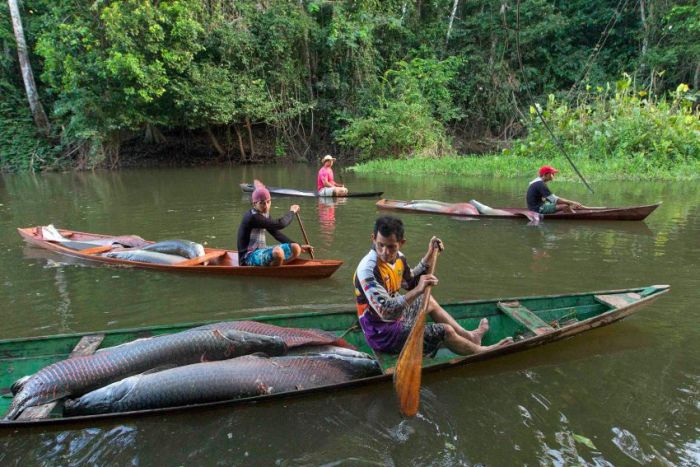|
|
Arapaima Fishing, Amazon River, Brazil
|
The arapaima has a fundamental dependence on surface air to breathe. In addition to gills, it has a modified and enlarged swim bladder, composed of lung-like tissue, which enables it to extract oxygen from the air. This is an adaptation to the often hypoxic conditions of the Amazon floodplains, but requires the arapaima to surface for air every 5 to 15 minutes. This tendency to stay at the surface makes it more vulnerable to attacks from spear fishermen.
Fishing
Commercial fishing of the arapaima has been banned by the Brazilian government due to its commercial extinction. Fishing is allowed only in certain remote areas of the Amazon basin, and must be catch-and-release, or harvesting by native peoples for consumption. Because the arapaima produces boneless steaks it is considered a delicacy; some 7000 tons per year were taken from 1918 to 1924, the height of its commercial fishing. The demand for the arapaima has led to farming of the fish by the "ribeirinhos" (as Brazilians call those living on the riverbanks).
|
|









